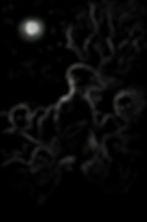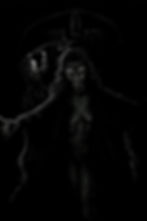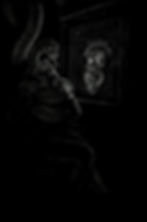10 Best Creepy Stories by E. T. A. Hoffmann (Other than The Nutcracker and The Sandman)
- M. Grant Kellermeyer
- Jan 25, 2019
- 9 min read
Updated: Oct 27, 2021
He was the godfather of modern horror, weird fiction, and fantasy, an inestimable influence on Poe, Dickens, and Hawthorne, de Maupassant, Stevenson, and James, left his fingerprints on “Frankenstein,” “Dr Jekyll and Mr Hyde,” “Dracula,” and “The Turn of the Screw,” and inspired filmmakers from Tim Burton and Christopher Nolan to David Lynch and Fritz Lang (and films from “Dr. Caligari” and “Metropolis” to “The Matrix” and “Mulholland Drive”). Yet few horror fans have ever read his works. Many have never even heard his name. Today he is most famous for writing the dark fantasy that Tchaikovsky fluffed up into “The Nutcracker” and for his proto-Freudian masterpiece of existential terror, “The Sandman,” but his influence demands that we give E. T. A. Hoffmann a much closer look.
An expert at blending the ordinary and the uncanny, his stories were some of the first to feature supernatural invaders in a contemporary setting. Unlike Perrault or the Grimms, his macabre fairy tales aren’t in a land “far, far away” or “once upon a time” – they take place in the sooty, bourgeois streets of his own time, and involve grotesque and often malformed agents of chaos piercing through the veil of the invisible world to introduce moral mayhem into the bland existence of bored daydreamers. In Hoffmann’s worlds, the “real” world is the fake one – like in “The Matrix” or “Alice in Wonderland” – a superficial façade distracting us from recognizing the wonders and horrors of true reality.
Tremendously complex and literary, his Gothic stories, dark fairy tales, and diabolical parables explore the relationships between reality and fantasy, reason and imagination, submission and inspiration, groundedness and sublimity, and spirituality and materiality. In this article we look at ten of his very best.
10. THE STRANGER CHILD

Hoffmann was never pleased with his Christmas fantasy, “The Nutcracker,” and although posterity has claimed it as a masterpiece, he reworked its seminal idea in this bizarre and creepy story about two children coming of age over the Christmas season. Two siblings, a boy and a girl, are cared for by their whimsical father and loving mother, despite their poverty. They are incensed when wealthy relatives visit them for the holidays, bringing a cache of toys and two eerily toy-like children, their cousins. Rejecting the expensive gifts, they head to the woods where they encounter “the Stranger Child” – an androgynous spirit (the boy believes it to be a boy, the girl a girl) who bemoans its exile from a fantasyland after being removed from the throne by an evil goblin in the form of a man-sized fly.
The children attempt to console the Stranger Child, but their own trials begin when their offended relatives send forth a tutor from Berlin to teach the children to accept reality and become unimaginative adults (unlike their father, whom the relatives blame for their willfulness). The misshapen Tutor Ink – a sadistic and eccentric martinet – is none other than the Stranger Child’s old enemy, come to bring misery to the human world.
9. THE GNOME-KING’S BRIDE

A truly strange tale, “The Gnome-King’s Bride” tells the story of Anna, a budding young woman who receives no attention from her widower father (an amateur alchemist who dresses up as a wizard and obsesses over elementals) or her long-distance boyfriend (a horrible poet who sends her sappy, shallow verses instead of visiting her in person). Anna is content with her garden, however, and is mesmerized by a wedding ring she finds there one day, with a (notably phallic) carrot growing through it. When her father learns that she has put the ring on, he suddenly awakens from his pretend-world (which includes a false beard and wizard hat) and seems to realize that she has sexually matured.
He warns that this might be a trick from a gnome (an earth spirit known for greediness, wealth, and lust), and his fears prove true when a parade of vegetable imps lead by their king, Daucus Carota, a two-foot tall anthropomorphic carrot, comes to claim her as his bride. Unused to attention, Anna falls for the ludicrous-but-sinister creature’s affection, and her father and boyfriend must snap out of their delusions to save her from a life under the earth filled with fungus, worms, and decay.
8. COUNCILOR KRESPEL

The story of Antonia Krespel and her eccentric father is one of Hoffmann’s most famous, and has been featured in several ballets, operas, and films. The councilor is a wild polymath: a renegade architect, imaginative toymaker, and student of violin making. He takes apart priceless violins in order to discover their secrets (and in the process, destroys them), and is equally possessive of his beautiful daughter’s singing voice. The supple Antonia is the object of a young musician’s passion, and the two secretly meet and sing together (a nearly overt metaphor for intercourse) despite her father’s command that she never sing for anyone else.
Having been diagnosed with a fatal heart condition that could be exacerbated by singing, she tries to obey his orders, but sometimes the heart wants what it wants. One night Krespel dreams of her singing with her lover until two red spots grow on her flushing cheeks, and her song lifts into a wild ecstasy. In the morning he finds her dead and wonders whether it was a dream, a psychic vision, or a spiritual projection of her heart’s desire.
7. A GHOST STORY

Quite short, but haunting nonetheless, “A Ghost Story” tells of two sisters who live in a Gothic mansion said to be haunted by the ghostly White Lady, a family specter. The elder is the hale and hearty Augusta, while the younger, Adelgunda, is equally pretty, but frail and excitable, treated with kid gloves by her overprotective family. On her birthday Adelgunda tells her friends to hide and watch her impression of the White Lady: she dresses in a cloak and stalks about the garden. But when the clock strikes nine, she is suddenly terrified, pointing to some invisible apparition that is pointing back at her. Shaken, she returns to the house and tries to forget, but sees it again every night at nine. What no one realizes is that the apparition is trying to steel Adelgunda and prepare her to become the stronger sister, for a tragedy is approaching that will force her to grow up quickly and exceed her family’s expectations.
6. THE VAMPIRE

Presaging Sheridan Le Fanu’s “Carmilla,” this story tells of an ill-starred marriage between a Prussian noble and Aurelia, the beautiful daughter of a madwoman. The Baron is deeply repulsed by Aurelia’s mother whom he compares to a cadaverous corpse, and is reminded of the lamia, a Greek monster who eats children. He learns that she had been the subject of a famous criminal trial, the details of which were hushed up, leading to her separation from her disgusted husband. Desperate to save the beautiful Aurelia from her mother’s control, he is relieved when the madwoman is found dead in a cemetery, but is surprised of the death’s effect on Aurelia: instead of grieving she is calm and troubled. They marry and conceive a child, and settle down, but as Aurelia’s pregnancy continues, he is surprised by her weak appetite. What he eventually discovers one night, after following her to the cemetery, gives “pregnancy cravings” a whole different meaning.
5. THE EMPTY HOUSE

A tale of corruption, sin, and decay, this story follows a young man who finds himself fascinated by a dilapidated house on a busy street which is said to be empty. Its caretaker is a grotesque man with skin like a mummy, and while it never shows signs of life, the protagonist cannot help but watch its windows. One day, while observing it, he sees the flash of a woman’s bejeweled hand resting on a window sill, and falls in love with its owner whom he imagines to be a prisoner in need of rescue. One night he is overcome by curiosity and breaks into the darkened house. Gropping about, he runs into his beloved: a raving maniac and an old woman. She nearly strangles him before the mummy-faced caretaker stops her with a whip. Then the real story, of who she is and how she lost her mind, begins.
4. THE LOST REFLECTION

A Faustian tale of lost souls and seductive femme fatales, “The Lost Reflection” is a highly autobiographical story written after Hoffmann’s great lost love (Julia Mark, a teenaged music pupil with whom he was obsessed, and whose family fired him after he attacked her sluggish fiancé for being drunk in her presence) was married. Rumors of the abusive marriage circulated in Prussian society, and before long, the two divorced, leading to Julia’s ruination in Hoffmann’s eyes. In “The Lost Reflection,” a dismal bohemian is invited to a New Year’s Eve party where he encounters his old flame, Julia. She is radiant and temptingly dressed, but he is repelled when her grotesque husband bumbles into their conversation, just as he is about to accept a drink from her.
He retreats to a beer cellar where he finds two other men wallowing in lovelorn misery. One has lost his shadow after a failed romance, and the other – a married man – lost his reflection while having an affair in Italy, and was evicted by his horrified wife. The protagonist later shares a room with the latter man, and wakes up to find a manuscript telling how he fell in love with Guilietta (Italian for Julia), a seductive prostitute, and how her demonic pimp (the spitting image of Julia’s husband) agreed to return his reflection for a horrible price. When the protagonist learns what the pimp desired, he is glad that he was unable to accept Julia’s drink…
3. THE MINES OF FALUN

A truly eerie ghost story, with tones of Norman Bates, “The Mines of Falun” follows a heartbroken sailor who learns that his mother has died while he was at sea. He gives the gifts he had brought her to a local prostitute, and finds himself compelled to change careers. Instead of sailing, he wants to work in the mines of Falun where he hopes to find a respite to his grief (the narrow caverns, even to the most casual of Freudians, notably resemble the vagina, and the dark, moist grottos he wanders through recall the womb). As he eases his way into the mining life, he learns of a dead miner named Torbern who coaxes new miners towards the heart of the mine, where he tries to convince them to devote their souls to the Queen of the Mines, a maternal spirit with both nurturing and sinister qualities. Although he becomes engaged to a beautiful woman, the young miner can’t resist the allure of the mines, and encounters Torbern several times. On the morning of his wedding, he can’t be found, and the mystery of what happened to him and why isn’t discovered for another fifty years…
2. THE WALLED-UP DOOR

Hoffmann’s most complex ghost story, “The Walled-Up Door” (or “The Entail”) had a clear influence on Edgar Allan Poe’s “House of Usher,” and is among the greatest haunted house stories of the 19th century. Set in a mansion on the Baltic coast, it follows three generations of the Von R. family who are slowly destroyed by familial corruption. It begins with the young narrator, Theodore, and his uncle, the Von R. family’s legal advisor, travelling to the Von R. castle on a snowy winter’s night. They are surprised by the manor’s decrepit condition, and are frightened by ghostly noises as they try to sleep. The next night the uncle, who seems to understand the source of the disturbances calls out to the ghost with the cryptic phrase, “Daniel, Daniel, what are you doing here at this hour?” which apparently soothes it.
The aristocratic heir to the property arrives soon after with his beautiful wife, Seraphine, with whom Theodore falls deeply in love. The two begin to meet for private music sessions (he plays piano and she sings), and his uncle watches their budding romance with wary eyes. After a tense few weeks of sexual desire and secrecy (which involve a frightening wolf attack, episodes of sleep-walking, and threats of duels), Seraphine is overcome by a hysterical illness and is taken away from the spiritually-poisonous castle. Theodore never sees her again. At this point, his uncle explains what is haunting Castle R., why his attraction to Seraphine was so dangerous, and who Daniel is…
1. THE GOLDEN FLOWER POT

Widely considered Hoffmann’s masterpiece, “The Golden Flower Pot” was his first great work, written after the darkest period of his life – one ruled by scandal, poverty, loneliness, and despair. At the end of this miserable era, Hoffmann chose to dedicate his life to “poetry” (that is, writing fiction) rather than his floundering career as a bureaucrat. This choice to choose art and spirituality over status and power was transcendental, and forever impacted his artistic vision. After this epiphany, he penned “The Golden Flower Pot” about the bumbling ne’er-do-well Anselmus, a pathetic but well-meaning student who feels detached from the material world around him. Things in his life finally change when he offends an old apple-monger who proves to be a witch in disguise.
The crone attempts to control his life by supernatural means (manifesting Jacob Marley-esque in doorknockers and trying to ruin his love life with femme fatales), but he is protected by a female fire spirit (who hides in the shape of a golden serpent) who falls in love with him. His quest to overcome the witch, marry the fire spirit, and transcend the bourgeois world may not be terribly horrifying, but it is one of the first great supernatural fantasy stories in modern literature, presaging Oz, Wonderland, Hogwarts, and Narnia.





